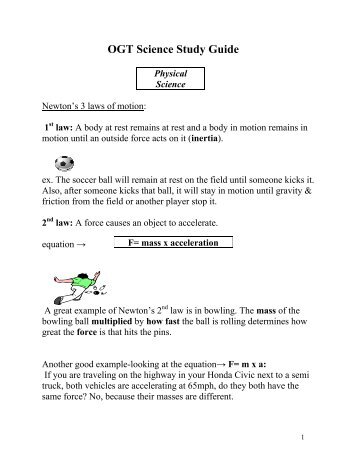Practice Ogt Study Guide Math
OGT Study Resources. Use these released tests and answers to practice for the OGT. Math Quick Study Guide #1. Ohio's Statewide Testing: OGT. Practice for the Test. Hello, you are not logged in. Take a Practice Test. Reading, Writing, Mathematics, Science, Social Studies. While this OGT Guide does not provide an exhaustive list of everything students. He tried to practice what he was learning by maintaining his correspondence with others.
.This webpage is meant to help you and your child prepare for the Math OGTs that occur in the middle of March for all Sophomores.The OGTs stand for the Ohio Graduation Test, and there are five separate tests each given on a different day (Reading, Writing, Math, Science, History).There are several links included below on this page that should help you understand how the test is set up and what material will be on the Math OGT.Throughout the year we will be using an online program called Odyssey. This can be located. There are six (6) core topics that are covered on the test.
Each of these topics will be covered in this course. (They might not be covered in this particular order).Number, Number Sense, Operations. Measurement. Geometry & Spatial Sense. Patterns, Functions, Algebra. Data Analysis & Probability. Mathematical Process Grading Scale (in points):.

Completion = 5. Homework = 10.
Mini-Quiz = 25. Binder Check = 40. Quiz = 50. Test = 100 - GREEN OGT packet = number of problems = number of points This is WONDERFUL. It explains and has several practice problems that are similar to problems on the OGT Math test Take a test.
Practice Ogt Study Guide Mathematics
Ogt science test: quick study guide - Hamilton Local O.G.T. SCIENCE TEST: QUICK STUDY GUIDE PLATE TECTONICS The Earth’s outer layer is broken up into 7 lithospheric plates. This is sometimes referred to as the CRUST. The plates move due to convection currents inside the ASTHENOSPHERE or MANTLE. When the plates move, many things can happen including volcano eruptions, earthquakes, mountain building, seafloor spreading, etc. ATOMS protons = positive charge, found inside the nucleus electrons = negative charge, found in the “electron cloud” (surround the nucleus) neutrons = neutral charge, found inside the nucleus THE PERIODIC TABLE The atomic number is equal to the number of protons. The number of protons is equal to the number of electrons in a neutral atom.
The atomic mass is equal to the number of protons plus the number of neutrons. The group number (found at the top of each column) is equal to the number of valence electrons.
OWNER'S MANUAL 2012. Congratulations on your decision to purchase a KTM motorcycle. Emergency OFF switch (250/300 EXC AUS). 2004 ktm 250 exc 4-stroke.
Science Ogt Study Guide

Ogt Study Guide Math
This is used when drawing electron dot structures. POTENTIAL ENERGY VS. KINETIC ENERGY potential energy – an object’s stored energy Objects that are higher up or have more mass have a higher potential energy. Kinetic energy – and object’s energy while in motion DENSITY density = mass/volume Objects or substances that are MORE dense SINK. Objects or substances that are LESS dense RISE. NEWTON’S LAWS OF MOTION & GRAVITY Newton’s 1 st Law: an object in motion stays in motion and an object at rest stays at rest Newton’s 2 nd Law: F = ma Newton’s 3 rd Law: for every action there is an equal and opposite reaction Gravity: Under ideal conditions, objects fall to the ground at the same rate. FOOD WEBS & ENERGY PYRAMIDS FOOD WEBS show the feeing relationships between plants and animals in an ecosystem.

Arrows show the relationships. They show the direction of energy transfer. ENERGY PYRAMIDS show the relative amounts of energy at each trophic level. The amount of energy is grea test at the bottom of the pyramid and lowest at the top of the pyramid.
PYRAMID OF NUMBERS shows the relative number of individuals at each trophic level. Trophic level – each step in a food web or pyramid SCIENTIFIC INQUIRY Observations are made by gathering information about events or processes. An inference is a logical interpretation based on prior knowledge or experience.
A hypothesis is a proposed scientific explanation for a set of observations. The variable that is deliberately changed is called the manipulated variable.
The variable that is observed and changes in response to the manipulated variable is called the responding variable. A control group is not exposed to the independent variable so that it can be used as comparison to the experimental data.
LAST MINUTE NOTES.